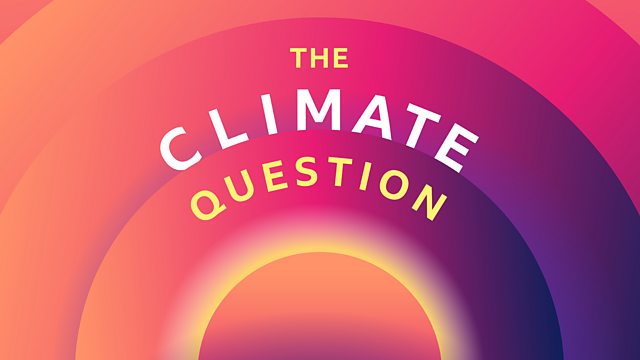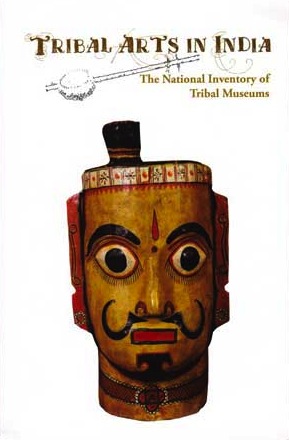Indigenous people represent only about six percent of the world’s population, but they inhabit around a quarter of the world’s land surface. And they share these regions with a hugely disproportionate array of plant and animal life. According to the UN and the World Bank, about 80 percent of our planet’s biodiversity is on land where indigenous people live.
“There is a need to explore the tribal consciousness in the backdrop of climate change, development, and deforestation.” – Deepanwita Gita Niyogi in “India’s Adivasi Identity in Crisis” Pulitzer Center May 27, 2021 | Learn more about climate change and illegal mining | United Nations on climate change | Find free publications on India’s hunter-gatherers in the Unesco Digital Library >>

What is caused (and not caused) by climate change?
How data can help fight a growing tendency by politicians and journalists to overstate the role of climate change| Learn more or listen here >>
For a natural balance
A National Consultation on Wildlife Conservation and People’s Livelihood Rights stresses the need to work towards conservation projects that are equally sensitive to the needs of wildlife and local communities. […]
The venue of the workshop thus offered a good opportunity for the participants to look at the collaborative work of the VGKK, ATREE and the Karnataka Forest Department on the use of non-timber forest produce (NTFP) to ensure the livelihood security of the Soligas, while attempting to keep the conservation objectives of the BRT sanctuary in mind. It also provided abundant proof that adivasis and forests are inextricably linked. Where the sanctuary and the tribal people had protected the forests, it had helped protect their nutritional and health basis. Dr. Sudarshan gave various instances of diseases/conditions such as appendicitis, colonic cancer, vitamin deficiency, ischaemic heart disease, hypertension, sexually transmitted diseases (STDs) and Acquired Immune Deficiency Syndrome ( AIDS), which were once unknown among the Soligas. Also caesarian deliveries and eyesight disorders were absent among them.
This real-life example of an alternative approach provided an ideal backdrop to discussions that dwelt on several critical national issues. At the outset, the context for the dialogue was set on the basis of the experience of conservation initiatives tak en in the past few decades in India.
IN an attempt to conserve the depleting forests and wildlife in India, the Wild Life Protection Act (WLPA) was enacted in 1972. It made the creation of national parks and wildlife sanctuaries (protected areas) the main means for wildlife conservation. Th ere were significant initial successes. […]
Calculations based on surveys conducted in the mid-1980s by the Indian Institute of Public Administration (IIPA), Delhi suggest that over three million people live in areas that are designated as national parks and sanctuaries and millions are dependent on the resources from them. Conservation efforts did not take into consideration these people, their rights or even needs. The conflicts were waiting to happen. Yellappa Reddy, retired forest officer and former Secretary, Environment and Forests, Karnataka, pointed out that the traditional harmony between tribal people and forest officers at the Nagarahole National Park was spoilt by a recent move to shift the tribal people out of the part. “If the government does not change its attitude, many more Veerappans will be created,” he said.
But the fault lies not only with the government. The increasing politicisation and commercialisation of the rural areas, the breakdown of traditions, and demands made by the growing human and livestock populations have all contributed to the present situation. The net result: wildlife, wildlife habitats, and the resource base of rural and tribal communities continue to be destroyed. […]
The Consultation suggested that a code of conduct that would make tourism an environmentally and culturally sensitive activity be formulated and enforced strictly. This would often happen only if local communities and wildlife officials/NGOs are empowered to manage and earn revenue from tourism. The major part of the revenue generated should go back to the management of the wildlife habitat. The Periyar Tiger Reserve (Kerala), the Morjim beach (Goa) and the Khanchendzonga National Park (Sikkim) – where locals benefited and ecological principles were applied – were cited as alternative models in this regard. […]
Source: “For a natural balance” by Pankaj Sekhsaria and Ashish Kothari,
Frontline Magazine, Volume 17 – Issue 11, May 27 – Jun. 09, 2000
Address : http://www.hindu.com/fline/fl1711/17111210.htm
Date Visited: Sun Sep 04 2011 13:11:28 GMT+0200 (CEST)

Read or download titles for free (eBooks & Magazine) >>
- about research findings by Pankaj Sekhsaria >>
- about the Soliga community >>
- in posts referring to the Hyderabad biodiversity pledge >>
[Bold typeface added above for emphasis]
India has committed US $50 million towards strengthening the institutional mechanism for biodiversity conservation in the country during its presidency of the Convention on Biodiversity (CBD). Called the Hyderabad Pledge, the amount was announced by Prime Minister Manmohan Singh while inaugurating a three-day, high-level ministerial segment of CBD on October 16. [2014]
[…] The funds will be used to enhance technical and human capabilities at the national and state-level mechanisms to attain the CBD objectives
Source: M Suchitra, Down to Earth, 4 July 2015: Hyderabad biodiversity pledgeUS $50 million to protect biodiversity in India
URL: https://www.downtoearth.org.in/news/us-50-million-to-protect-biodiversity-in-india-39358
Date visited: 17 April 2019
- For up-to-date information on any of the issues, places, institutions or persons mentioned in this post, use the search window here: Google custom search – Indian press coverage of tribal culture and education >>
- Research the above issues with the help of Shodhganga: A reservoir of theses from universities all over India, made available under Open Access >>
- Check a custom built interactive map for more information on a particular state or region >>
Find up-to-date information provided by, for and about Indian authors, researchers, officials, and educators
List of web portals covered by the present Custom search engine
Ashoka Trust for Research in Ecology and the Environment (ATREE) – www.atree.org
Freedom United – www.freedomunited.org
Government of India (all websites ending on “.gov.in”)
Kalpavriksh Environmental Action Group – https://kalpavriksh.org
Shodhganga (a reservoir of Indian theses) – https://shodhganga.inflibnet.ac.in
Survival International – www.survivalinternational.org
UCLA Digital Library – https://digital.library.ucla.edu
Unesco – https://en.unesco.org
Unesco digital library – https://unesdoc.unesco.org
Unicef – www.unicef.org
United Nations – www.un.org/en
Video Volunteers – www.videovolunteers.org
WorldCat (“the world’s largest library catalog, helping you find library materials online”) – https://worldcat.org
To search Indian periodicals, magazines, web portals and other sources safely, click here. To find publishing details for Shodhganga’s PhD search results, click here >>
Search tips
Combine the name of any particular state, language or region with that of any tribal (Adivasi) community.
Add keywords of special interest (music, poetry, dance just as health, sacred grove and biodiversity); learn about the rights of Scheduled Tribes such as the “Forest Rights Act” (FRA); and the United Nations “Declaration on the Rights of Indigenous Peoples”, “Universal Declaration of Human Rights”, “women’s rights”, or “children’s right to education”.
Ask a question that includes “tribal” or “Adivasi”, for instance: “Adivasi way of life better?” (or “tribal way of life worse?”)
Specify any particular issue or news item (biodiversity, bonded labour and human trafficking, climate change, ecology, economic development, ethnobotany, ethnomedicine, global warming, hunter-gatherers in a particular region or state, prevention of rural poverty, water access).
For official figures include “scheduled tribe ST” along with a union state or region: e.g. “Chhattisgarh ST community”, “Himalayan tribe”, “Scheduled tribe Tamil Nadu census”, “ST Kerala census”, “Particularly Vulnerable Tribal Group Jharkhand”, “PVTG Rajasthan”, “Adivasi ST Kerala”, “Adibasi ST West Bengal” etc.
In case the Google Custom Search window is not displayed here try the following: (1) toggle between “Reader” and regular viewing; (2) in your browser’s Security settings select “Enable JavaScript” | More tips >>
Note: hyperlinks and quotes are meant for fact-checking and information purposes only | Disclaimer >>
Some clarifications on caste-related issues by reputed scholars >>
Learn more
Atree.org | Ashoka Trust for Research in Ecology & the Environment (posts)
Biodiversity | Hyderabad biodiversity pledge | Nilgiri Biosphere
Climate change | Audio | The Climate Question (BBC Podcast)
eJournals & eBooks | Background guide for education
eLearning: Center for World Indigenous Studies
Forest Rights Act (FRA) | Hunter-gatherers | Legal rights over forest land
Health and nutrition | Recommendations by the Expert Committee
“The tribal food basket has always been diverse and nutritious”
United Nations on climate change
What is the Forest Rights Act about?
Who is a forest dweller under this law, and who gets rights?
Explore India’s tribal cultural heritage with the help of several interactive maps, specially created for visitors to this website:
- An alphabetical journey across India: from Andaman to West Bengal
- Northeastern India: the “Seven Sister States” & Sikkim
- Visit a museum in India: Indigenous art, anthropological & ethnographical collections
- A virtual journey across time and space: from Gondi-Harappan to present & future
- Locations for video documentaries & external media contents
- Particularly Vulnerable Tribal Groups & Endangered languages
- Places associated with press reports and blogs about India’s tribal cultural heritage
- A virtual journey across India: from Ladakh to Gujarat